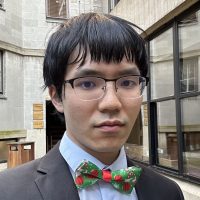
Mingtao Xia (New York University, Courant Institute of Mathematical Sciences)
ZoomReconstruction of stochastic differential equations characterizing noisy single-cell molecular dynamics In the talk, I shall introduce our recent work on developing machine-learning-based methods for reconstructing noisy single-cell molecular dynamics as stochastic differential equations, which aims to quantify intrinsic fluctuations in the stochastic process characterizing cellular dynamics. I will then discuss how to apply my methods …






